Question
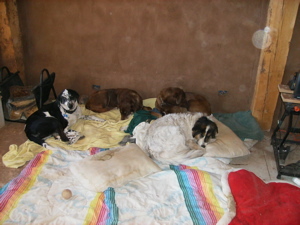 Sudden aggression in o
Sudden aggression in o
We have an approximately 11-year-old Dalmatian mix who has lived with us since she wandered up as a puppy. Of the two dogs who were here before her, one recently died. Now this dog, Mona, has begun attacking the eldest, Annabear, when we are going into or out of the house. We have to pull her off, and I am afraid Annabear is going to run away (we live in open range country) or be seriously injured. The other two dogs are around ten months, litter-mates; one of them is ho-hum and the other seems to pick up on Mona's energy and tries to bully Annabear once we've pulled Mona off her.
I will gladly answer any and all questions. I appreciate the seriousness with which you approach this panel.
With thanks,
Randy
PS Here's a picture of the four dogs, with Mona at front left and Annabear front right. The other two are pit mixes, one with more pit and one with more shepherd.
AnswerGoing in/out of narrow doorways is a rank struggle (who will be FIRST); it appears that the death of your oldest dog has provoked anxiety and (as a result) a struggle for control (rank) in Mona (and unfortunately the female puppy is following her lead, this being a clear symptom of anxiety.) You need to quickly establish some rank in this situation yourself. In the meantime, you need to put these dogs out separately out of sight of one another before this behavior begins indoors over toys, resting places, food, attention, etc. (which is the next logical event.) You cannot allow it to repeat even one more time and you must be vigilant about other subtle signals occurring indoors that may suggest this struggle is about to transfer to indoor activities.
It's quite difficult to determine basic temperament from photographs unless they are candid, since most dogs react to the camera with ears flat back, turned head, etc., all normal behaviors demonstrating anxiety at the presence of a strange object (the camera), flash, clicking noise, etc. However, in that photo I see that Mona has lifted her head while AnnaBear appears frozen in place with a shift of eye to the camera, rather than a more assertive body posture (as Mona has.) Now, this could be serendipitous (Mona may already have had her head lifted, AnnaBear may have been sound asleep, etc.) but if it is not it's a clear indication that Mona is the more determined, whether fearful or not. Her anxiety at the loss of the older dog is prompting her determination to be in control of "her" pack and AnnaBear, because of her age and softer temperament, is being demoted. AnnaBear knows what's going on, as this is basic Dog 101 in communication. Who goes first through doorways; who gets greeted first; who gets fed first; who has the "right" to toys and treats before the others; who sleeps in the choicest location and/or can dislodge the other dog from a choice location; who lies in doorways and appears to be controlling movement; who greets visitors first, these are all signs of high rank in a dog pack (AND between dog and humans, although most humans are unaware.) You need to think about these things carefully; make a chart if you must, outlining your observations from the present and those you remember from the past.
Blocking Mona's ability to "discipline" AnnaBear for going through a doorway first won't work because it may inadvertently promote AnnaBear, in her own eyes or in Mona's, and this will make things worse. The fact that this is occurring at all in front of you tells me you're out of the mix altogether, Mona is simply discounting your presence. You need to study dog body language immediately and observe these two dogs quite closely for signals they are giving one another. Is AnnaBear precipitating a problem in some way; is Mona warning AnnaBear with direct eye contact (quite subtle) before "correcting" her, etc. Read Turid Rugaas' book on this topic and you can visit her site for some brief education:
http://www.canis.no/rugaas/index.php
Read Patricia McConnell Ph.D.'s book on multiple dog households and read John Fisher's "Think Dog". These are long term solutions but they will ultimately help you direct these dogs out of this problem. Meanwhile, I assume all these dogs have at least one basic obedience skill (they can all 'sit' on command)? Make each dog 'sit' on command before allowing them in/out, feeding them, petting them, playing with them, interacting with them in any way. This is a Nothing In Life Is Free regimen and it promotes YOU psychologically while making the dogs feel much more secure. Dog require a safe, calm, consistently secure environment, especially after the disappearance of one of their pack members. YOU are the "top dog". You need to observe who comes forward faster to greet you when you walk into the room and what the OTHER DOGS do when that happens, and report back; you need to observe toys, who hordes, who seems to have real "possession", what do the other dogs do regarding these trophy objects. If the dogs are fed together, watch eyes and body language: does one make the rounds of the others' bowls; does one appear to covet the others' bowls; does Mona make AnnaBear nervous by eying her during meal time, etc. What you aim to do is not only get a better understanding of the pack dynamics (and how they are changing), but also attempt to dissuade any further development in rank opportunism from Mona as well as determine who is who in this relationship (i.e., who should you feed first, greet first, etc.)
This is a tricky business but you can do it if you approach it studiously and patiently. Meanwhile: NILIF for everyone and don't allow repeat performance of this rank opportunism from Mona. Spend a couple of days considering my suggestions and making your observations. if possible, get more pictures; repost in two days with further reports and tell me how your NILIF is going.


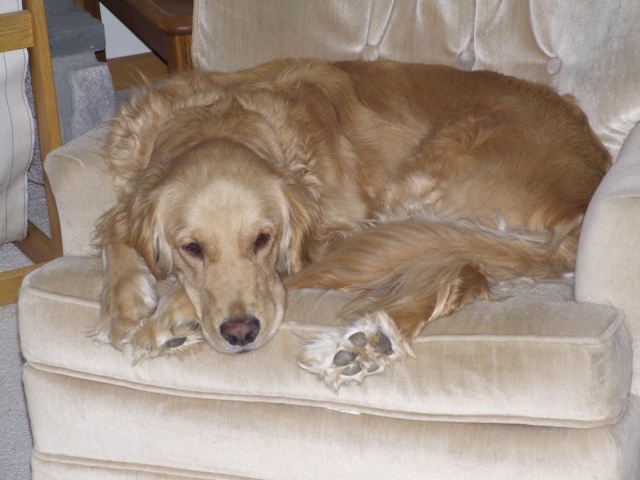 aggression in aging dog
Question
Niko
I have a thirteen year old, female, Samoy
aggression in aging dog
Question
Niko
I have a thirteen year old, female, Samoy
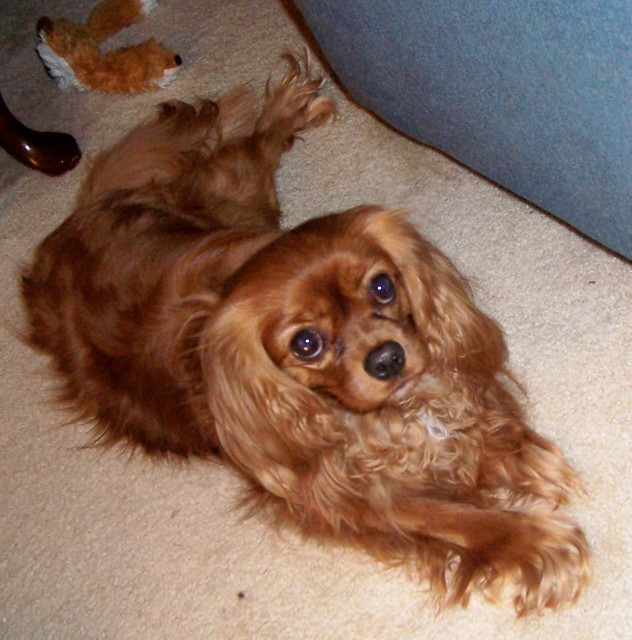 Dog light and shadow chasing
Question
Jenni
My 3 year old Cavalier King Charles Span
Dog light and shadow chasing
Question
Jenni
My 3 year old Cavalier King Charles Span
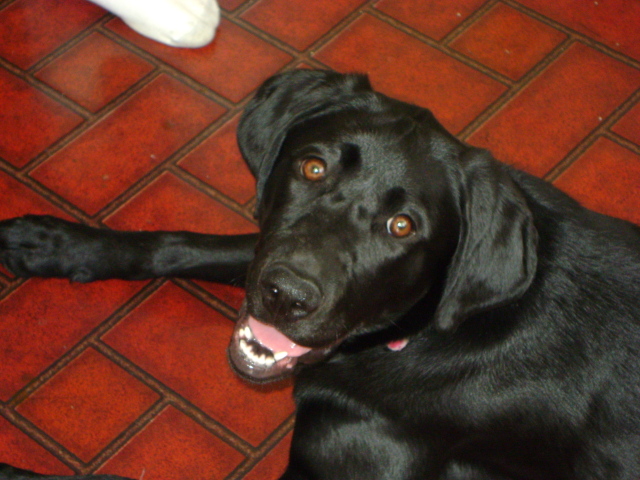 Black lab - 1 yr
QuestionSheba
QUESTION: My lab loves to bite her
Black lab - 1 yr
QuestionSheba
QUESTION: My lab loves to bite her
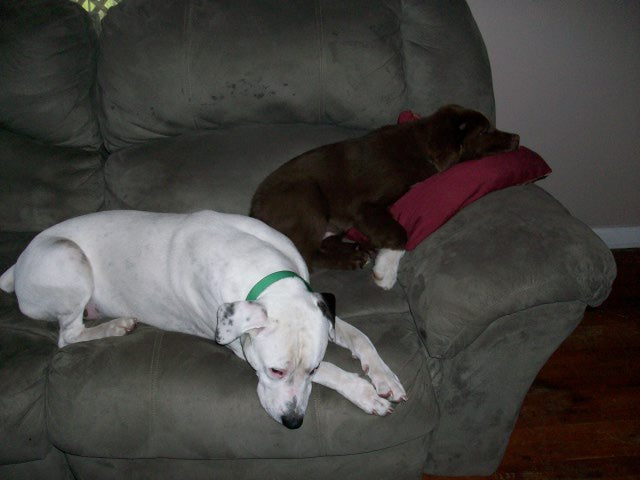 American Bulldog aggression
Question
Buddy and Rez
I have a 2 year old Ameri
American Bulldog aggression
Question
Buddy and Rez
I have a 2 year old Ameri
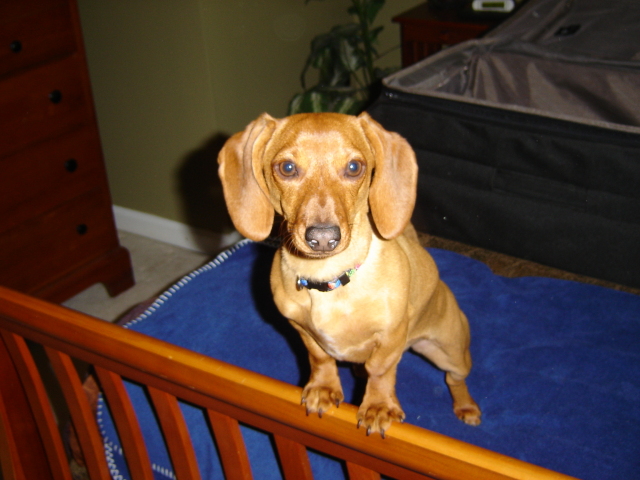 Mini Daschund with anxiety issues
QuestionAbigayle
QUESTION: I have a 3 1/2 yr old
Mini Daschund with anxiety issues
QuestionAbigayle
QUESTION: I have a 3 1/2 yr old